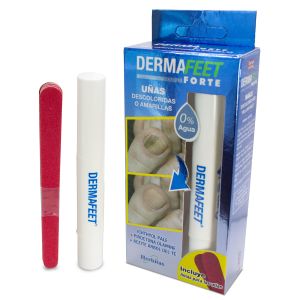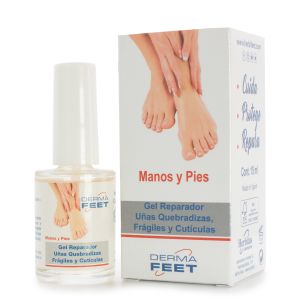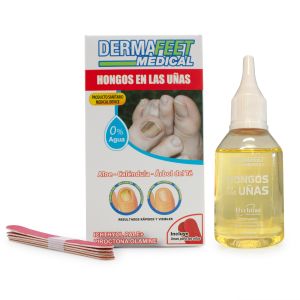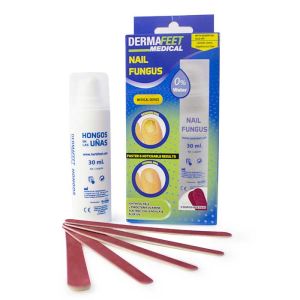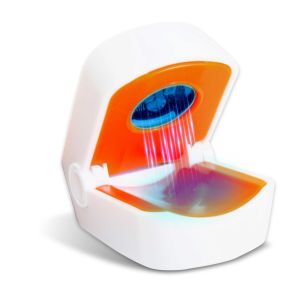Nail Treatment
2 reviews
from as low as £10.79
17 reviews
from as low as £39.98
Nail Fungus Laser Treatment
There are various methods for treating Nail Fungus, but Nail Laser Treatment and Nail Fungus Creams stand out as the most popular methods.
What is the best nail fungus treatment?
- Nail Fungus Laser Treatment: This type of treatment involves the use of a laser that emits pulses of energy, generating heat directed at the affected nail. The laser penetrates directly through the toenail and reaches the nail bed, targeting the area where the fungus is typically present. This focused laser treatment effectively addresses the fungal infection during the procedure.
- Nail Fungus Cream: We have a number of different nail fungus creams that all do one thing, kill the nail fungus. They can work in conjunction with the laser, enhancing the overall health of the nail after the treatment. By using the fungus cream or gel alongside the laser, the combined approach aids in improving the nail's condition post-treatment.
How does Laser Treatment for Nail Fungus work?
Laser Treatment for Nail Fungus operates by emitting pulses of energy that generate heat around and on the nail, gradually eliminating the fungal infection.
It is important to note that the nail laser does not deliver sufficient energy to eradicate the entire infection in a single session. Therefore, it is recommended to undergo multiple treatment sessions to ensure complete removal of the fungus.
During the treatment, the growth of the fungus is inhibited. However, it is unlikely that the nail will be completely clear after the initial use of the laser, as some microorganisms may partially survive.
To enhance the overall effectiveness of the treatment and promote the health of the nail, it is advisable to apply a nail fungus cream immediately after using the Laser treatment. This combination helps boost the general well-being of the nail and enhances the treatment's efficacy in eliminating the fungal infection.
Does Nail Treatment Kill Fungus?
Nail Treatment, whether using both methods (nail laser and fungus cream) or solely relying on the nail laser, has the potential to eliminate the fungus in the nail. However, it is rare for the fungus to be completely eradicated in the first treatment session.
During Laser therapy, a focused beam of light is directed into the toenail. The energy emitted by the laser disrupts the structure of the fungus, leading to its permanent elimination over time.
The laser used in the treatment is specifically designed to target the fungus without causing harm to the nail, surrounding skin, or adjacent areas. This ensures that the treatment is precise and minimizes the risk of any damage.
How Do I Know If I Have a Nail Fungus Infection?
The most effective way to confirm the presence of toenail fungus is to undergo a nail culture test conducted by a podiatrist. It is advisable to schedule an appointment for a prompt evaluation. Immediate assessment is crucial because if the infection is indeed caused by fungus, it has the potential to spread to other toes if left untreated.
Detecting toenail fungus at an early stage enhances the likelihood of successful treatment, as the infection can be addressed more rapidly. Conversely, if the infection spreads, the treatment process becomes lengthier.
There are numerous advantages associated with Laser Treatment for Nail Fungus:
When utilizing nail fungus treatment, particularly in the early stages, several benefits can be experienced:
- No recovery time: The treatment can be used daily without any disruption.
- Convenient for home use: The laser device or cream can be easily applied to the affected toenail, allowing for convenient treatment at home.
- Safe and painless: Nail Laser treatment is free of side effects and poses no risks for individuals with conditions such as diabetes, high blood pressure, or other vascular diseases. In fact, there have been no documented issues related to laser treatment for toenail fungus.
- High success rate: Studies have shown a cure rate of approximately 93% for nail laser treatment.
- User-friendly: The treatment process for either the nail laser or the nail fungus cream is simple and straightforward.
- No side effects or medication: This type of nail treatment eliminates the need for medication or drugs.
- No interruption in daily life: After the nail treatment, there are no restrictions, and individuals can immediately resume their normal activities.
- Time-efficient: The treatment duration is relatively quick, typically lasting 12-15 minutes per foot, regardless of the number of infected nails.
What are the signs of improvement?
While some individuals may observe rapid improvement and clearance of the fungal infection within a few sessions (which can be quite rare), additional sessions with the nail laser or nail cream may still be necessary, even if the fungus appears to be gone.
It is important to be patient as the healing process can take time, and it may take up to 12 months for the nail to grow out completely and confirm the success of the treatment.
Signs of improvement to look out for during Nail Fungus Treatment include:
- Normal texture and shape of new nail growth, without thickness or abnormal bumps.
- Resolution of flaky debris on or under the nail.
- Disappearance of yellow, brown, or white discoloration in the affected area.
Find out: What are the benefits of a nail fungus laser?
How can I determine if I have toenail fungus?
Nail fungus infections develop and spread gradually, so it may take some time before you notice the signs.
Typical symptoms of toenail fungus include:
- Flaky and brittle toenails that easily break.
- Curved, ingrown, or twisted toenail shape.
- Excessive nail thickness, making it difficult to trim with clippers.
- Change in nail color, such as brown, white, or yellow discoloration.
- Foul odor emanating from the affected toenail.
- Pain around the toenail as the thickened and curved nails press into the skin.
- Loose or separated toenails.
- Discoloration spreads to other toes or even the surrounding skin.
What causes a fungal nail infection?
This highly transmissible infection prospers in warm and damp environments. It can be contracted through:
- Walking barefoot in communal areas like swimming pools, showers, gyms, and changing rooms.
- Insufficient foot hygiene.
- Inadequate drying of the spaces between your toes.
- Wearing shoes that create excessive heat and sweat on your feet.
- Existing athlete's foot, which can facilitate the infection's spread to the nails. Even a minor nail injury can escalate your susceptibility.
Found out more about Nail Fungus Causes & Treatments.
Tips to Prevent Fungal Nail Infections:
Certainly, prioritizing the prevention of nail fungus after experiencing it is essential. Here are several tips to help you avoid nail fungus infections in the future:
Address Athlete's Foot Promptly:
- Monitor the skin between your toes for signs of athlete's foot.
- Treat with antifungal cream to prevent its spread to nails.
Choose Proper-Fitting Footwear:
- Opt for well-fitting shoes with ample space for ventilation.
- This minimizes the chances of creating warm, moist environments ideal for fungal growth.
Prioritize Cotton Socks:
- Wear breathable cotton socks.
- Change them regularly to maintain dryness.
Personal Hygiene Items:
- Avoid sharing towels and socks with others.
Minimize Barefoot Exposure in Public Spaces:
- Use flip flops or sandals in communal areas like pools, changing rooms, and showers.
Prevent Cross-Contamination:
- Refrain from using the same nail accessories or tools on infected and healthy nails.
Maintain Foot Hygiene and Nail Care:
- Trim nails straight across, avoiding rounded or v-shaped cuts.
- Regularly inspect and trim your nails.
- Disinfect your nail clippers after use.

